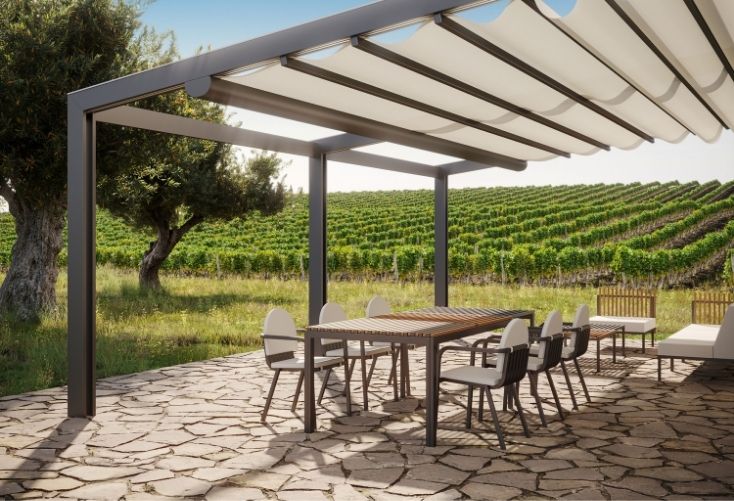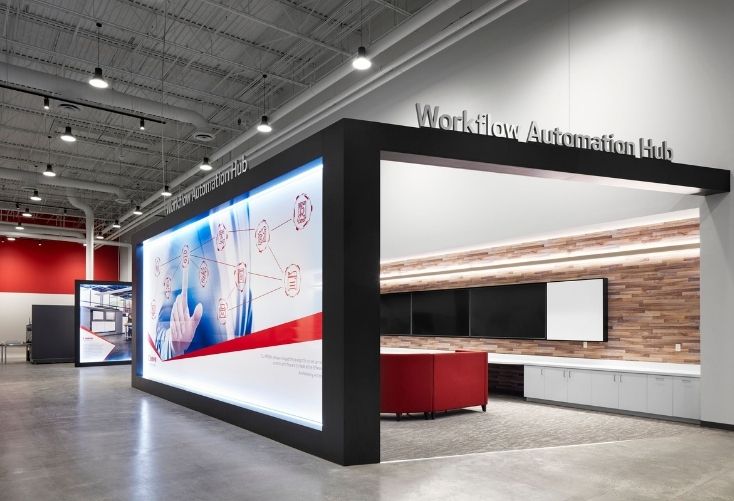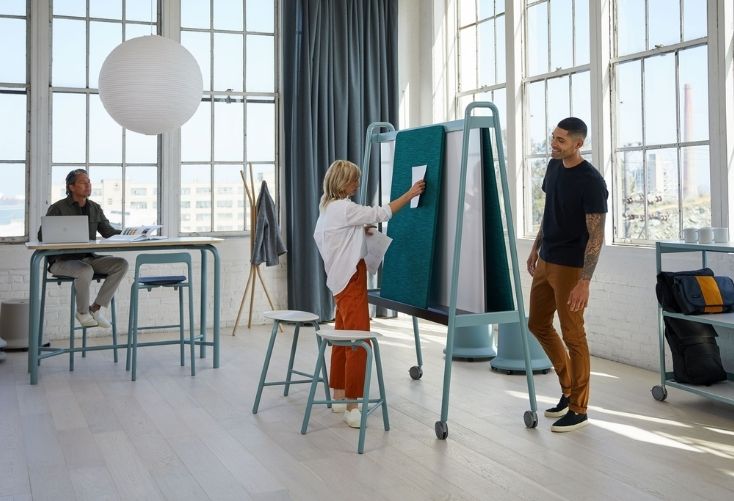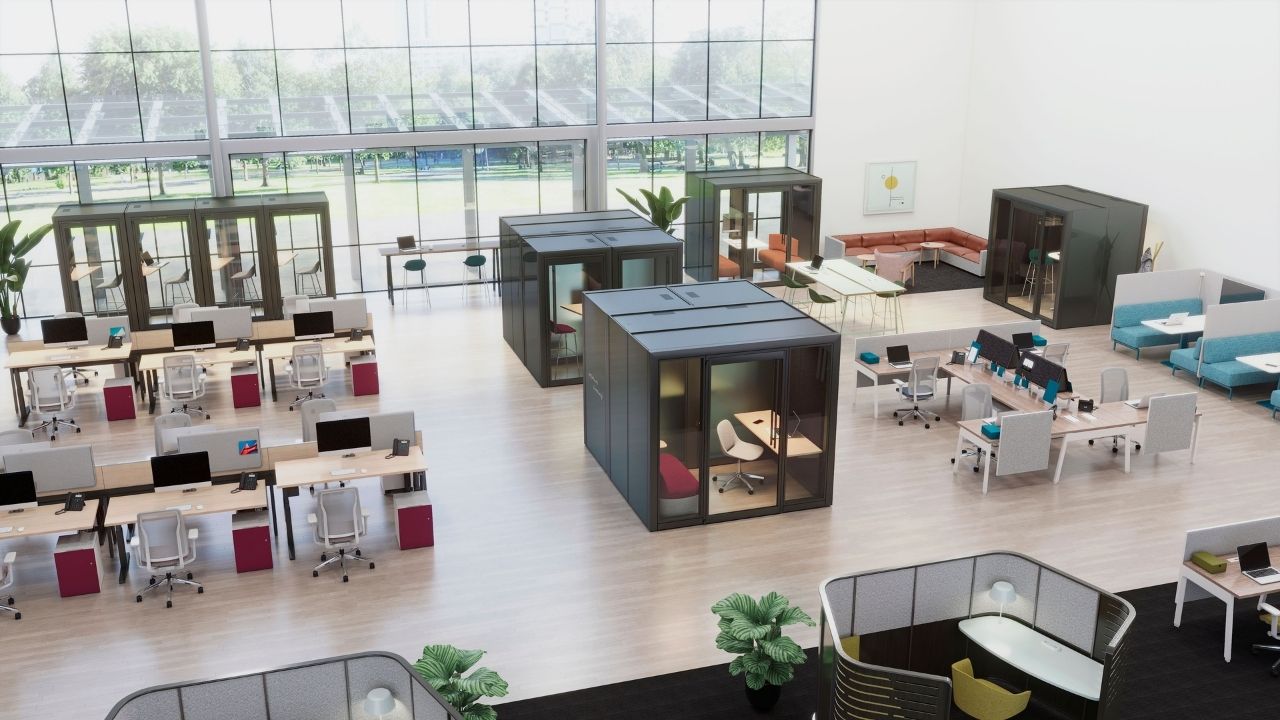- In 2022, there will be some new changes to the workplace that have been impacted by current trends spurred on by the pandemic.
- The role of the office has changed. As we move into 2022, the office will serve as a hub for company culture and collaboration.
- Furniture that provides both flexibility in use and privacy will be popular as workers return to the office.
The world of work is continuously evolving and it follows never-ending trends, some of which will greatly improve the way we work in the future.
The way in which the workplace is designed has a great effect on employee’s wellness and productivity. Many design companies have realized this and have come up with innovative ways to transform and improve the workplace/coworking spaces.
In 2022, there will be some new changes to the workplace that have been impacted by current trends spurred on by the pandemic.
The New Role of the Office
The new role of the office in 2022 is about being a hub for company culture and for collaboration, dressed in the visual identity of the organization.
An office serves as a representation of a brand’s identity and a space that communicates values and mission while creating meaningful experiences.
Change of Culture and Reallocating Real Estate
“Many of our clients are making the transition to unassigned seating in the office, with greater use of phone booths or semi-private rooms to provide team members with flexibility and choice. As the nature of business has changed since COVID, with more and more meetings being conducted virtually, there will be a need for office design that supports conference calls. Sophisticated, integrated technology will be introduced to accommodate a shifting hybrid workforce,” according to Jodi Williams, AICP, LEED AP ID+C, Prosci, CRTKL Principal and DC Office Lead.
Outdoor Amenities
“We are already seeing a shift in the hierarchy of amenities occupiers seek when choosing a new building or renovating their space. Demand for flexible, tech-connected private outdoor options will increase: the ability to go outside makes people not only feel safer in group meetings and individual work for those without enclosed offices, but also strikes all the notes for biophilia-related outcomes for health, wellbeing, productivity, and of course, sustainable use of resources,” added Williams.
The workplace of 2022 will focus on creating more points of physically distanced and virtually connected spaces, indoor and out to respond to the physical, social and emotional needs of the workforce of tomorrow.
Many offices are continuing to find innovative ways to enhance their outdoor spaces for employees to unwind and relax.

For example, composite fabric designer and manufacturer Serge Ferarri introduced the Soltis® Proof W88, a waterproof material for awnings and canopies that is translucent to allow natural light to shine through while providing UV and outdoor element protection.
The Influence of the Metaverse on Office Design
Because the Metaverse can only be meaningfully accessed with immersive technology (XR), the relevance for the Metaverse in professional settings varies by profession.
The purpose of new technology in the workplace is to add value to the companies that incorporate this tech.

“One obvious value-add is the embodied experience of presence in virtual environments, this really will make a difference for remote and hybrid workforces, as it enables people to feel togetherness regardless of location. Teaming up with specialists that help you understand what useful superpowers would be in your own work, and if these are the same in the office as well as while remote, is a good starting point for grasping if and how your workplace can benefit from Metaverse services, or immersive software,” said Nandi Nobell, CRTKL Associate, Creative Director XR.
“Within our own office, we aim to converge our current workplace with our new digital workspace by utilizing the metaverse. Using our own metaverse technology, Environments recreates the workspace and enables users to not only see what’s happening in their offices but communicate with those in-person or working from home,” said Erin McDannald, CEO and Co-Owner of Lighting Environments and its sister company, Environments.

This approach allows for inclusive socialization and a seamless interactive experience that includes all employees equally, enabling them to enjoy a safe and healthy community while getting the same experience virtually as they would in person.
Workplace Design Predictions from Design Companies
Teknion
Throughout 2020, people became accustomed to flexible work hours, an occasional or non-existent commute, and the ability to self-manage in the home environment.
Yet data supports the premise that many workers want to return to the office – a safe, secure office – for perhaps 3 or 4 days a week.
Assuming office occupancy will stabilize post-vaccine at about 60-70%, a well-designed workplace will deploy furniture, space, and high-and low-tech tools to support 100% participation. However, employees are distributed across space and time.

As employees shift between in-person and at-home work, flexible, privacy furniture, allowing users to create their own personal environment such as the POD product will play a large role in the look of tomorrow’s office spaces.
Studio TK
The workplace of the future is evolving and the designated workstation may be a thing of the past.
More workplaces are becoming more collaborative and that hybrid work is the way of the future, and much more solo work will be done at home; collaborative social spaces are going to be the norm of an office.
However, when someone is in between meetings and they need 30 minutes to work through email or a spreadsheet, they will need a place to go to have that quiet moment of relief from the noise of the new office.

“Temporary workstations or pods give that relief by offering the needs of the user with power ports, bag storage, noise dampening to give privacy, and tools for a person to have that same quiet space they get from home. Products that promote the ability of work space but are not a designated desk will be more important than ever,” said Dan Winer, Director of Marketing & Supply Chain, Studio TK.
Kirei
The companies that will be successful in 2022 and beyond are now focused on how to make their workplaces not only functional, but also a pleasure to spend time in.

“We are seeing a massive influence of hospitality into workplaces as their role is not only to be conducive to work, but also to attract people to come back to the office. Acoustics will play an even bigger role as companies redesign their offices to have the quiet and cozy feeling of the home offices we spent the last 2 years in and facilitate better hybrid work scenarios. No company wants to have the echoey room on a zoom call. We all know we can do better than that,” said Michael DiTullo, Creative Director of Kirei.
Framery
Video conferencing has become a core facet of business today, enabling organizations to communicate and stay connected.
Research shows that by the end of 2021, 30% of the global workforce is expected to work remotely multiple days per week, leading to increased video conference calls.

Open offices typically lack a variety of conference rooms and quiet areas to work, limiting video conference ability.
Allseating
When people started working from home, they suddenly needed to create a home office. Many of these people were buying their own chairs based on style and price point, not ergonomics, and are now looking for something more long term.

In addition, companies now need to budget for providing office equipment in both the home and the office — so an affordable price point for office furniture is more important than ever before.
“We created our newest product, Eighty Two, to blend effortlessly into any home or office with a low price point coupled with the myriad of ergonomic features such as a headrest, arm options, and seat slider. Companies will be able to revamp their office space or provide a work-from-home option for their employees, all while staying within budget,” said Paul Vendittelli, President of Allseating.
Ted Moudis Associates
The future of the built environment is constantly evolving, and we’ve recently seen a return toward increased privacy in the workplace.
“Privacy is largely achieved through increased considerations for acoustic and visual privacy. As such, we’ve been implementing booth style pods and Zoom conference rooms to provide team members with an optimized environment to conduct meetings, free from auditory distractions. Further, technology like double glazing or switchable glass has allowed us to design for increased visual privacy while additional layers of drywall and acoustical blankets have allowed us to up the ante for acoustic privacy,” said Jennifer Adams, LEED AP, Design Director, Ted Moudis Associates.
Operable partitions are being added to workplaces to allow for division of space, creating flexible privacy when necessary. As the pandemic continues, we are still seeing workplaces embrace spaces for collaboration while team members are simultaneously reclaiming some of their pre-pandemic privacy.


 Dr. Gleb Tsipursky – The Office Whisperer
Dr. Gleb Tsipursky – The Office Whisperer Nirit Cohen – WorkFutures
Nirit Cohen – WorkFutures Angela Howard – Culture Expert
Angela Howard – Culture Expert Drew Jones – Design & Innovation
Drew Jones – Design & Innovation Jonathan Price – CRE & Flex Expert
Jonathan Price – CRE & Flex Expert














